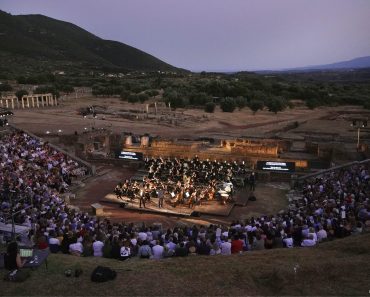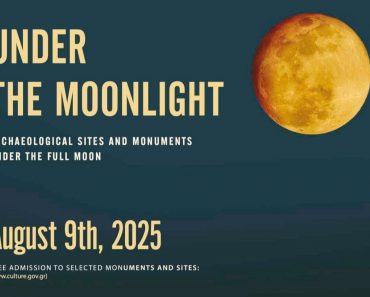During its heyday in the 1990s, the heart of Athens’ underground music scene beat in dark, dingy basement clubs that drew crowds of revelers looking for a different way to party.

Giorgos Fakinos, a wildly popular DJ, was one of the scene’s leading proponents; he introduced the scene to new bands and music trends, organized events, and threw some truly memorable parties. He also founded a legendary club in 2008 that came to exemplify all the different manifestations of the scene, from goth to industrial and even fetish.
Second Skin on Konstantinoupoleos Street in the hip downtown Athens district of Gazi, closed in 2019. It was a development that, for some, marked the death of a scene that exploded in the 1990s and held strong for over a decade. For others, it was just a sign of its transformation.
“The 1990s was the last analog decade – without cellphones, social media and online apps. The only way to experience something was live and in the flesh. It involved mixing with people outside your home and hearing new music at the same bars,” Fakinos tells Kathimerini today.
The different “tribes” that made up the scene, he explains, using the popular term for the followers of specific music genres and subgenres within the broader scope of underground, “were very influential and had an impact not just on sound, but also on film and fashion. Depending on which tribe you belonged to, you frequented the requisite clubs and bars to meet people who were on the same wavelength and make new friends,” he explains.
Downtown Athens was certainly the epicenter of the scene, but almost every district and suburb in the Greek capital had an “alternative” or “underground” bar or club that was frequented by local music buffs and creatives.
“I find today to be such a boring, generic age; it lacks color and an identity. Nevertheless, the underground scene will always be around as a creative means of expression. The question is how powerful and meaningful it will be in each given era,” says Fakinos.
Apart from the fact that the number of bars and clubs expressing the underground scene has dwindled, the entire entertainment culture has also changed.
“What I’ve noticed is that clubbing – as my generation knows it – only attracts certain specific age groups. Millennials and Gen Xers were inveterate clubbers, they did everything to the max. Gen Z, however, prefers different forms of entertainment, and I believe that a large chunk of this generation has swapped real experiences for scrolling,” says Fakinos.
‘The 1990s was the last analog decade – without cellphones, social media and online apps. The only way to experience something was live and in the flesh’
The DJ also expressed nostalgia for the “rituals” of the 1990s clubbing and underground culture. “You’d start thinking about what to wear on Saturday night on Tuesday; you’d wonder about what music a specific DJ would play and how you’d dance to it.”
He also has some advice for keeping the experience of going out real: “Maybe next time you hear a song you like and don’t know who it’s by, ask the DJ instead of Shazam.” One thing he does admire about Gen Z is how it’s raised the aesthetic bar, especially in the goth scene.
“In contrast to older fans of the scene, ‘baby bats’ are almost all very thoughtfully attired, wearing extremely creative clothing, often that they’ve designed or made themselves. You see these kids at concerts, mainly, and they add such a pop of color to a scene once dominated by black,” he says.
As Fakinos keeps the pulse going, new figures are redefining the underground scene, introducing new sounds and aesthetics, while also maintaining the connection with the past. One of the most influential of these figures right now is electronica artist Valisia Odell [photo by Aura Photography], who segued from DJing to fronting the two-person act of the same name. Her deep, sensuous vocals and striking stage presence have sent Greek dark wave, minimal wave and dark electro on an exploration of new directions.

Aged 39, she may have just missed the underground heyday of the 1990s, but she believes that its magic still lives on today. “I think that the peak of the underground community when I experienced it was in the mid-2010s. DIY venues were all the rage and an intense need for expressive outlets was everywhere. There was no strategy involved; just impulse: concerts in basements, collectives, exhibitions and parties that you never knew how they’d end,” the artist tells Kathimerini.
For Valisia Odell, Athens’ underground scene is even more vibrant and multifaceted today, thriving alongside a wide range of genres such as dark wave, punk, techno, experimental, hip-hop and their evolving forms.
“It may take on different shapes, but it never disappears,” she says. “It belongs to those who feel the need to express themselves outside the boundaries of the ‘established’ and the ‘norm’ – and, thankfully, that drive never goes on pause.”
She also noted how women and queer individuals have a much more assertive role today, shaping the scene rather than just being a part of it, as was often the case in the past. “This is precisely what underground is about: creating outside the dominant stereotypes and creating your own space where it’s not given to you,” she says.
What underground is hasn’t changed; only its manifestation has. “It’s just something different. On the one hand, social media has created instant access, which makes everything a bit more ‘exposed’ and less mysterious. We’re more digitized, more visible, more exhausted. On the other, due to the high cost of living, DIY spaces have decreased dramatically.”
Another big difference is that the scene in the 1990s tended to have a political edge, which it lacks today, but one thing that hasn’t changed, “and should never change,” is “people’s need to make a connection.”
“That’s where the spark of what we call ‘underground’ really lies,” she says.
So while abandoned factories, warehouses, basements and ‘secret’ locations have given way to design-forward venues and big organized concert spaces, for Valisia Odell, “this isn’t necessarily a bad thing.”
“It’s a different reality,” she says.








